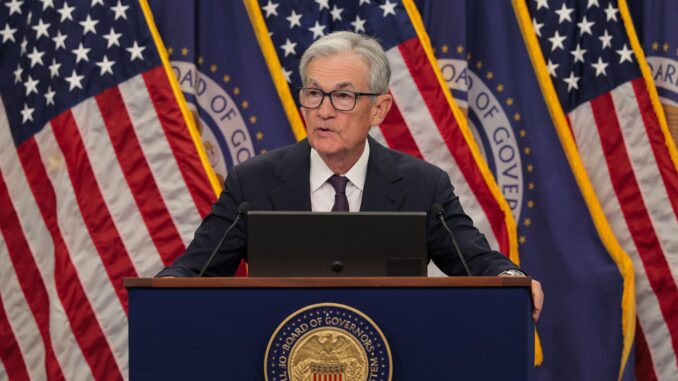
Federal Reserve officials in September were strongly inclined to lower interest rates, with the only dispute seeming to be over how many cuts were coming, meeting minutes released Wednesday showed.
The meeting summary indicated near unanimity among participants at the Federal Open Market Committee that the central bank’s key overnight borrowing rate should be cut due to weakness in the labor market.
They split, however, on whether there should be two or three total reductions this year, including the quarter percentage point move approved at the Sept. 16-17 meeting.
“In considering the outlook for monetary policy, almost all participants noted that, with the reduction in the target range for the federal funds rate at this meeting, the Committee was well positioned to respond in a timely way to potential economic developments,” the minutes stated.
“Participants expressed a range of views about the degree to which the current stance of monetary policy was restrictive and about the likely future path of policy,” the document added. “Most judged that it likely would be appropriate to ease policy further over the remainder of this year.”
Projection materials released at the meeting exemplified the close split among the 19 officials who take part at FOMC meetings, 12 of whom vote.
The “dot plot” of individual members’ expectations showed the group split 10-9, with the slim majority expecting two more cuts before the end of the year.
While the full Federal Open Market Committee voted 11-1 to lower its benchmark interest rate by a quarter percentage point, participants had varying views on how aggressive they should be through the rest of 2025 and the next several years. The reduction took the federal funds rate down to a target range of 4%-4.25%.
Ultimately, a slight 10-9 majority favored the equivalent of quarter-point cuts at each of the two remaining meetings this year. Projection materials indicated the likelihood of one more cut in both 2026 and 2027 before the funds rate settles in a long-term range around 3%.
However, the meeting featured a range of viewpoints. The Sept.16-17 session was the first for newly appointed Governor Stephen Miran, who took office just hours before the start.
Miran singled himself out as a lone voter who favored a much more aggressive easing path. Though the minutes do not identify individual participants, the post-meeting statement noted that Miran was the dissenting vote, preferring instead a half-point cut.
Moreover, in subsequent public appearances, Miran noted that he was a lone “dot” that indicated a much more aggressive path of easing than the rest of the committee.
The meeting appeared to see views across the spectrum, with some preferring a more cautious approach to cuts.
“Some participants noted that, by several measures, financial conditions suggested that monetary policy may not be particularly restrictive, which they judged as warranting a cautious approach in the consideration of future policy changes,” the minutes said.
The committee’s sentiment matched a survey the Fed sends to primary dealers in financial markets, the summary said.
“Almost all respondents to the Desk survey expected a 25 basis point cut in the target range for the federal funds rate at this meeting, and around half expected an additional cut at the October meeting,” the minutes stated. “The vast majority of survey respondents expected at least two 25 basis point cuts by year-end, with around half expecting three cuts over that time.”
One basis point equals 0.01%, so a 25-basis-point move is the equivalent of a quarter percentage point.
This is breaking news. Please refresh for updates.





Be the first to comment